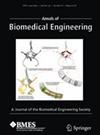Experimental Assessment of Traction Force and Associated Fetal Brain Deformation in Vacuum-Assisted Delivery
Abstract
Vacuum-assisted delivery (VAD) uses a vacuum cup on the fetal scalp to apply traction during uterine contractions, assisting complicated vaginal deliveries. Despite its widespread use, VAD presents a higher risk of neonatal morbidity compared to natural vaginal delivery and biomechanical evidence for safe VAD traction forces is still limited. The aim of this study is to develop and assess the feasibility of an experimental VAD testing setup, and investigate the impact of traction forces on fetal brain deformation. A patient-specific fetal head phantom was developed and subjected to experimental VAD in two testing setups: one with manual and one with automatic force application. The skull phantom was 3D printed using multi-material Polyjet technology. The brain phantom was cast in a 3D-printed mold using a composite hydrogel, and sonomicrometry crystals were used to estimate the brain deformation in three brain regions. The experimental VADs on the fetal head phantom allowed for quantifying brain strain with traction forces up to 112 N. Consistent brain crystal movements aligned with the traction force demonstrated the feasibility of the setup. The estimated brain deformations reached up to 4% and correlated significantly with traction force (p < 0.05) in regions close to the suction cup. Despite limitations such as the absence of scalp modeling and a simplified strain computation, this study provides a baseline for numerical studies and supports further research to optimize the safety of VAD procedures and develop VAD training platforms.

 求助内容:
求助内容: 应助结果提醒方式:
应助结果提醒方式:


